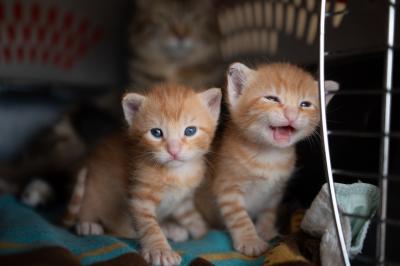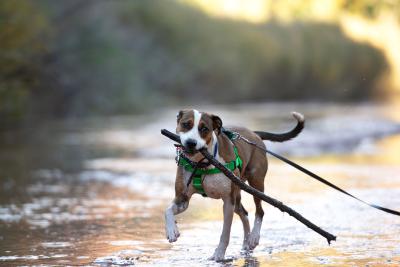
Summer safety tips for pets and their people
Summertime brings long days, ample sunshine, and plenty to do outdoors for people and their pets. However, it’s important to follow summer pet safety tips for our friends with the furry coats. Hot weather can quickly become dangerous for dogs, cats, and other animals, as can common summer activities like travel and fireworks. But with some simple precautions, you can ensure that fun in the sun is fun for everyone.
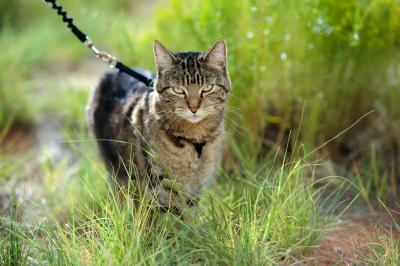
Beat the heat
To keep pets safe in hot weather, try to limit exposure as much as possible. Plan your walks during the morning or evening hours when it’s cooler and keep pets indoors during the hottest part of the day. If you do go out for quick walks or potty breaks in the heat, aim to keep pets in the shade. And always keep an eye on dogs outside on a tether. If the tether gets tangled, they might not be able to reach shade or water.

Check the ground
Hot concrete, asphalt, sand, or even packed dirt can burn an animal’s paws. So before heading out for a walk, check the ground with your hand or foot. If you can’t touch the surface for more than a few seconds, it’s likely too hot for your pet as well. Instead, try to find areas to walk with grass and shade trees — and if you have your own yard, consider planting a shady, cooling garden oasis.

Encourage hydration
Pets should always have access to fresh water, and water temperature can make a difference. Some pets won’t drink hot water, no matter how thirsty they are. So in hot weather especially, plan to dump and refill the water bowl often — especially bowls that are kept outside or where sun hits them inside — and watch your pet to make sure they’re drinking. (And make sure they haven’t tipped over their water bowl in an attempt to create a cool spot to lie in.) Likewise, it’s ideal to bring water with you on a walk or when traveling with your pet, adding ice cubes to keep it cool if necessary.
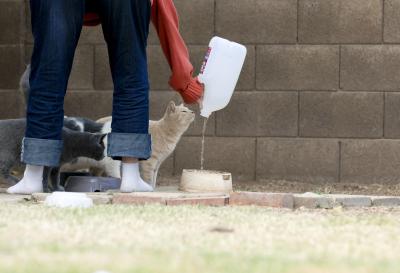
Watch for heatstroke
Normal body temperatures for dogs and cats range from around 100 to 102.5 degrees Fahrenheit. Heatstroke can occur when their internal temperature rises to around 106 to 108 degrees, which can result in irreparable organ damage or even be fatal. Signs of heatstroke in dogs and cats include distress, weakness, heavy breathing and panting, vomiting, excessive drooling, and a dark red to purple tongue. Pets who are older or overweight, have a thick coat, or have a pushed-in nose (such as bulldogs and Persian cats) are especially at risk of overheating.
If you suspect heatstroke in your pet, move them out of the heat right away. Apply cool (but not icy) water to their ears, belly, and paw pads, but don’t submerge them in cold water or cover them with a cold, wet blanket or towel. Once your pet is stable, bring them to the vet as soon as possible, even if they appear to be OK — they might still be experiencing internal issues.
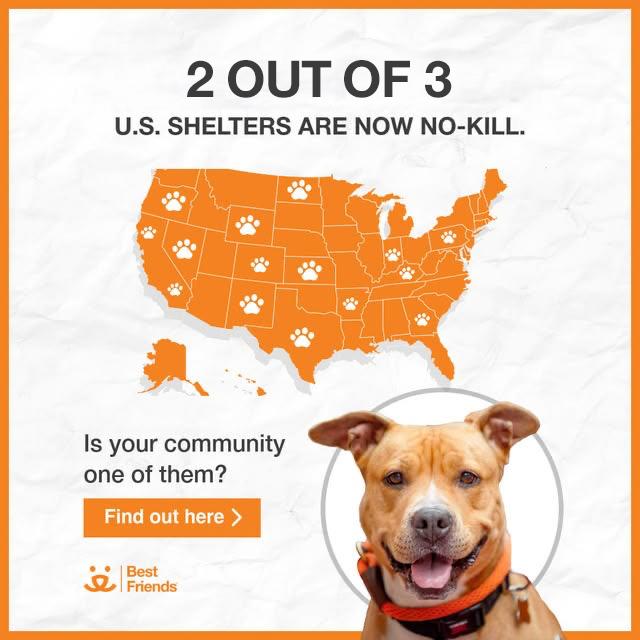
See how your community is doing
Avoid hot cars
In temperatures above 70 degrees Fahrenheit, never leave a pet in a parked car — even if the windows are rolled down, the car is parked in the shade, or it’ll just be for a short time. Dogs and cats pant to lower their body temperature, and if they’re panting recycled hot air in the car, they won’t get any cooling effect. Heatstroke can set in quickly — even in just a few minutes. Similarly, never let a pet ride in an open bed of a pickup truck. Not only is there the risk of physical injury, but truck beds are often dark colors that can get dangerously hot.
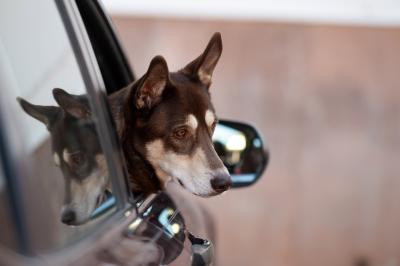
Plan ahead for travel
If you’ll be bringing your pet with you on a summer vacation, make sure to have a travel plan to ensure their safety. Check that your pet’s ID tag and microchip information are up to date, and bring a copy of their vaccination records, their veterinarian’s contact info, and a current photo. Plus, look over their collar, harness, leash, travel crate, pet first-aid kit, and anything else you need to make sure everything is in good shape and ready for the journey. Consulting with your veterinarian can be helpful when planning a pet-friendly vacation. They can advise you on ways to minimize stress, prevent carsickness, fly safely, and more.

Don’t forget sunscreen
The natural coat of a dog or cat generally provides sun protection and acts as cooling insulation. That’s why it’s inadvisable to shave a pet during hot weather. However, some animals might need a pet-approved sunscreen on exposed areas, including those with bald patches or very thin fur. Ask your veterinarian about what kind of grooming and sun protection is best for your pet’s individual needs.
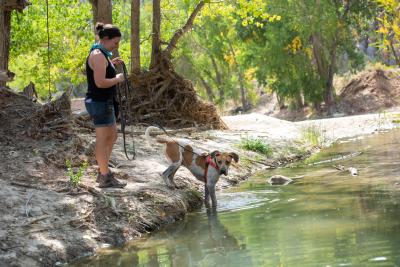
Keep pets safe around fireworks
Fireworks are a staple of summertime, but many dogs, cats, and other pets aren’t fans of all the booms, pops, and flashes. Pets can easily get spooked and injure themselves or run away. But fortunately, there are several steps you can take to keep pets calm around fireworks. When there are fireworks nearby, secure pets indoors in a quiet room. Close the windows, draw the curtains, and try turning on the TV or calming music to drown out the sounds. Give pets their favorite toys or treats or simply sit with them and pet them — whatever has a relaxing effect.
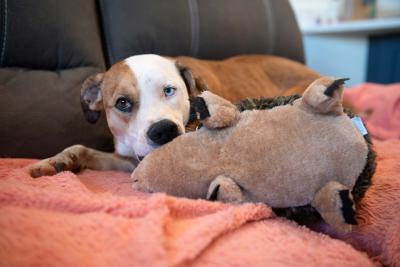
Have some fun
Yes, summertime does come with some hazards, but it’s also full of fun opportunities for pets and the people who love them. Head to a local trail or just walk around town to check out the flora and fauna that appear when the weather warms up. Lounge in a park with your pet and do some people (and squirrel) watching. Visit pet-friendly patios to dine with your pet or try whipping up a frozen treat at home that your best friend can enjoy.
Also, consider helping out at your local animal shelter. Many shelters have programs that let volunteers take dogs out for walks or even on adventures out in the community, so the pups can enjoy the nice weather too.
Plus, with kitten season (the warmer months when many kittens are born outside) in full swing, you can have fun and save lives at the same time by providing vulnerable tiny kittens with a foster home where they can grow healthy and strong. Even just fostering a cat or dog for a weekend can change their life forever.
And who knows? You might meet a summer love who ends up becoming a new member of your family.
